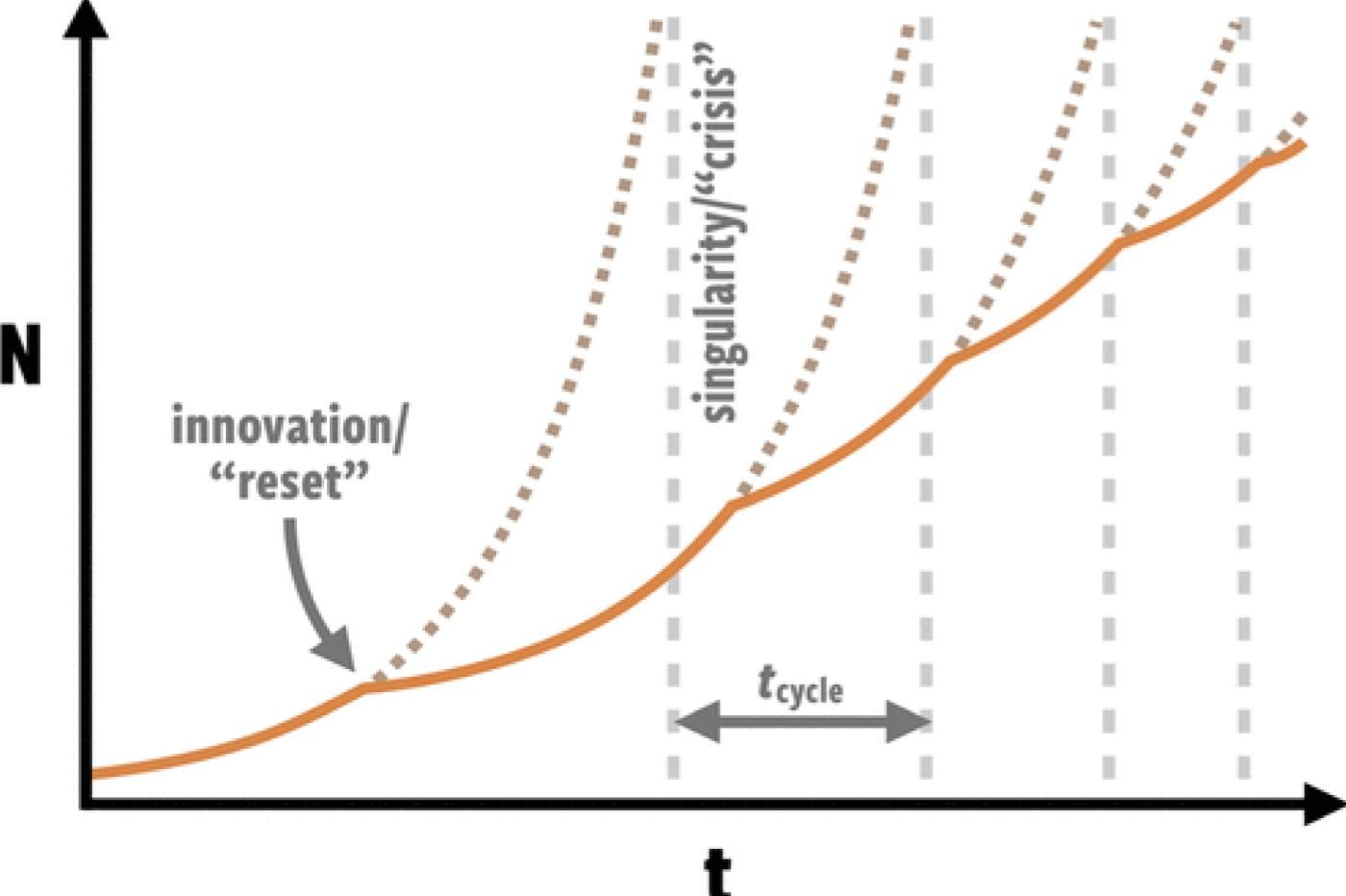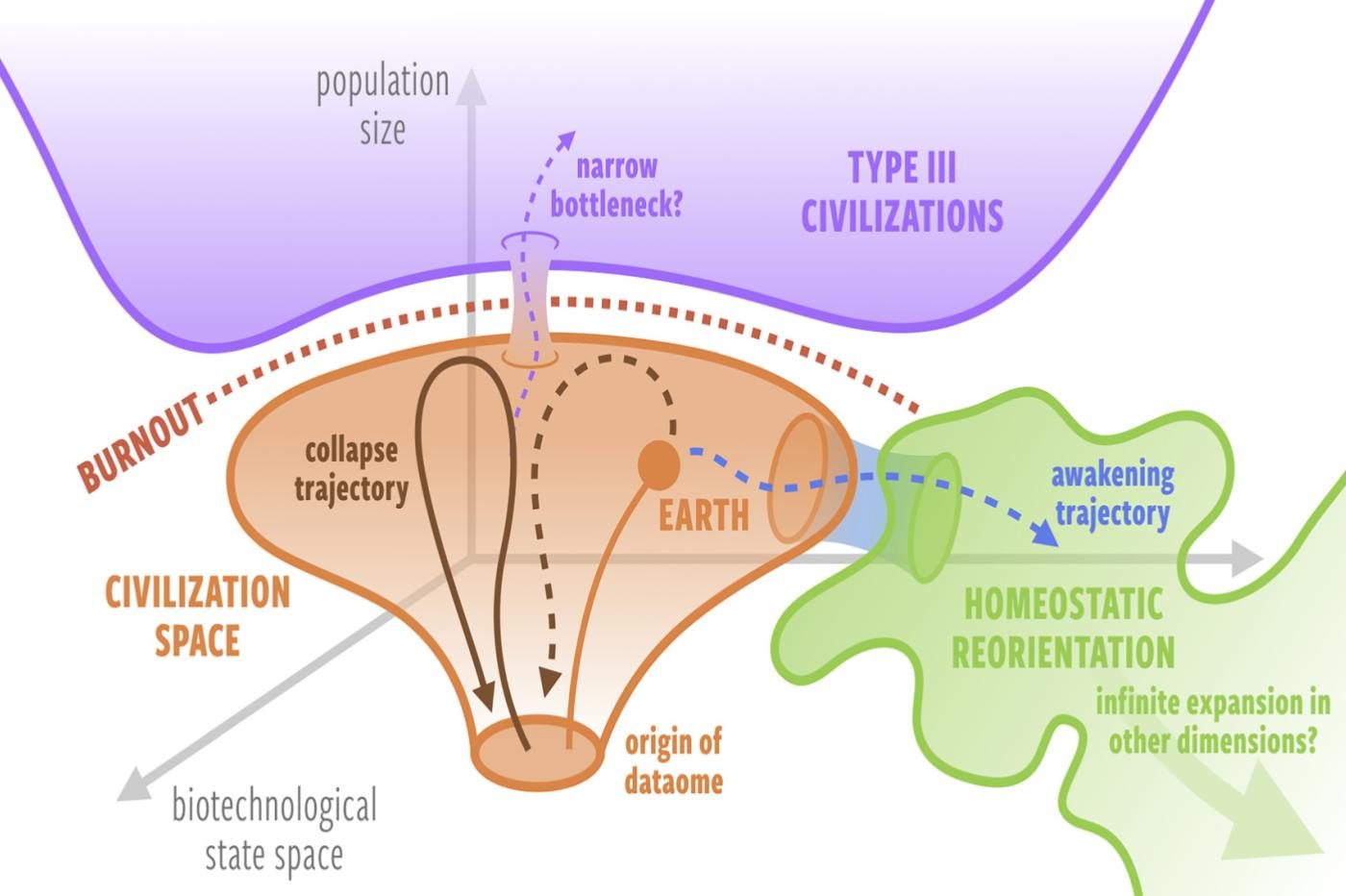A runaway phenomenon could have caused the extinction of many civilizations… and humanity had better take note of it.
The search for extraterrestrial life has come a long way since the kitschy science fiction of the turn of the last century. Finished, the little green men and the flying saucers; today, the most concrete work on this question seeks above all radio signals or biogeological traces, as Perseverance is for example doing on Mars.
There remains, however, a whole section of science that is actively seeking to communicate with an intelligent species that would have hypothetically developed light years from our Earth. We can for example cite a recent NASA initiative which sent a new elaborate radio message to the aliens, 50 years after the famous Arecibo Message (see our article).
But here it is: despite all the efforts of METI and other institutions that have tried to communicate with extraterrestrials, the latter have still not had the courtesy to answer us. It remains to be seen why we still have no sign of them, when the odds suggest we’re probably not alone in the universe.
If a very young species like humanity is already able to travel in space, why should we be the only ones to communicate there? Are extraterrestrials so different from us that we don’t understand their messages? Are they located too far? Did they only exist one day? Good luck to anyone who can answer these questions.
A potential explanation for the Fermi Paradox
Even today, the reasons for this “Great Silence” remain mysterious. Many theoreticians have tried to provide more or less fanciful explanations for this phenomenon, since called the Fermi Paradox, in homage to the genius physicist who gave it its name.
Today there are a whole bunch of possible scenarios classified into three different categories. The first simply states that there is no other intelligent civilization capable of communicating with us. The other two both suggest that they exist, but that they don’t communicate with earthlings – voluntarily or not.
And this collection of hypotheses has just been enriched thanks to the work of two American planetary scientists spotted by TheNextWeb. In a study published in Royal Society Open Science, they proposed a scenario which they dubbed “asymptotic burnout”.
A limit story
To understand the basis of this hypothesis, it is necessary to take a closer look at the second part of the title. The term ofasymptote will likely bring back old memories of math class; very commonly, on a graph, it is an imaginary straight line which a mathematical function inexorably approaches without ever touching it. We then speak of a limit, or possibly of singularity depending on the context.
To illustrate the idea, we can use the function 1/x which presents two asymptotes: a vertical and a horizontal which intersect at the origin. When you progress on one side or the other of the graph (towards -∞ or +∞), the plotting of the function gets closer and closer to a precise straight line (here, the horizontal axis), but without ever managing to reach it. (see it concept of limit for more details)
This simple function is not the only one that presents an asymptote, far from it. This is also the case for a whole host of other functions, including those that serve to model the growth of a civilization from a tangle of extremely complex factors.
A perpetual headlong rush
Indeed, previous studies have already determined that a society’s growth, productivity and energy consumption increase significantly faster than the population itself. Visually, vsThis results in the appearance of these famous asymptotes on the graph as the population grows. Here, it is about vertical asymptotes. The value of the function we are studying tends to infinity at this point.
An abstract reasoning, but which has consequences that are easy to understand visually. In practice, this means that by continuing at this rate, the civilization in question will find itself unable to maintain this breakneck rate of expansion. Constraints, such as resource requirements associated with population growth, are exploding; they even begin to tend towards infinity approaching this famous asymptote. Civilization is moving towards pure and simple collapsehence the term “asymptotic burnout”.
But in practice, this is not necessarily the case. Some lucky species, like mankind, can push back the inevitable through regular cycles of innovation. This allows to cushion this explosion of constraints to deviate from the path that leads to ruin. On a chart, this translates into a temporary flattening of the curve, and therefore into a reprieve.
Humans have already achieved this – all things considered – a few times. Researchers cite, for example, the relative nuclear disarmament that followed the Cold War, or the awareness of the problem of the ozone layer that made it possible toreverse at this level; two episodes that have significantly clarified our future prospects. Even if there is obviously bread on the board.
These events, researchers describe them as “homeostatic awakenings”. It is a term borrowed from biology which designates the ability of a system to maintain balance despite external constraints. In medicine, it refers to physiological balance; it is this phenomenon of homeostasis that allows the body to maintain itself at 37°C, among other things.

Many civilizations would have succumbed to burnout
But on the scale of a civilization, it designates its ability to maintain a stable population. And this is where it gets interesting in the context of the search for extraterrestrial life. Because this concept of asymptotic burnout forces species to participate in a long marathon for survival; no question of missing the slightest checkpoint under penalty of disappearing quickly.
Statistically, this means that the most potential candidates for intelligent species status would likely have died out after such a burnout; an element that could at least partially explain the Great Silence aliens so far. The good news is that a species close to burnout would be very easy to spot, at least on paper. “They would produce significant fluctuations in certain parameters” that it would then be possible to detect according to the researchers.
We would then have a window to attempt to communicate with… but this window would by definition be very short. After all, it would essentially be about a civilization embarked on a mad dash towards extinction. “They would alter their surroundings and would wildly dissipate energy so not durable”, say the researchers. “The first species we will encounter will be maybe smart, but definitely not yet “wise””, nuance the researchers.

Such is taken who thought he was taking?
Just a minute. Lack of anticipation, alteration of the environment, clumsy management of energy… wouldn’t that remind you of something?
This is indeed the most interesting point of this paper, certainly fascinating but ultimately very abstract and almost empty of concrete implications as such. When you read the researchers’ scenario, you can’t help but spot some parallels with the trajectory taken by the human species. Between the climate crisis, overconsumption, the ostrich policy of political decision-makers, the behavior of certain large organizations… we must admit that our species is already quite familiar with this concept.
And above all, she does not yet fully realize it. One can only note the resonance between these works and the latest UN report, who criticizes the complacency of Earth politicians in the face of the challenges that await them (see our article). And that’s a nice booster shot. If it wants to be sustainable, humanity will have to take matters into its own hands; we will have to continue innovating, questioning ourselves and even reinventing ourselves… for eternity.
“Civilizations can either collapse due to asymptotic burnout or change course”, soberly explains Dr. Michael Wong, lead author of the study. Before being able to verify the value of this new proposition, it will therefore already be necessary to begin by ensuring our next homeostatic awakening. Otherwise, much more far-sighted extraterrestrials will probably have plenty of time to watch us go up in smoke light-years away, and not the other way around. A height!
The text of the study is available here.
[related_posts_by_tax taxonomies=”post_tag”]
The post This hypothesis about the silence of aliens hides a lesson for humanity appeared first on Gamingsym.
